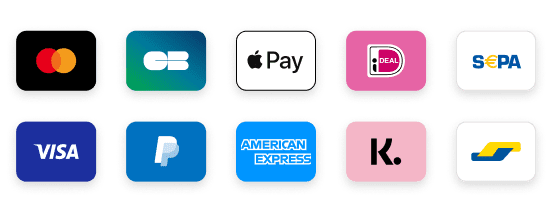In today’s fast-paced digital landscape, delivering high-quality, low-latency video content is crucial. Traditional broadcasting methods often fall short, leading to buffering, poor video quality, and dissatisfied viewers. This is where an IPTV encoder becomes indispensable. By integrating advanced productivity software and digital tools, IPTV encoders streamline your workflow automation, enhancing both efficiency and time management.
Key Features and Components
High-Quality Video Compression
IPTV encoders utilize advanced compression algorithms like H.264 and H.265 to reduce file sizes without compromising quality. This ensures efficient bandwidth usage and smooth streaming experiences. StreamHut+3xtremeloaded.com+3flixiptvs.net+3flixiptvs.net
Low Latency Streaming
For live events, low latency is critical. Some encoders achieve glass-to-glass latency as low as 100ms, ensuring real-time content delivery. IcebergIPTV+2Uniguest+2StreamHut+2
Adaptive Bitrate Streaming
This feature adjusts video quality based on the viewer’s internet speed, providing uninterrupted playback even in low-bandwidth scenarios. Reddit+5xtremeloaded.com+5flixiptvs.net+5
Multi-Format Support
Encoders often support various input and output formats, ensuring compatibility with different devices and streaming platforms. flixiptvs.net+3xtremeloaded.com+3StreamHut+3
Transcoding Capabilities
Advanced encoders can convert content into multiple formats and resolutions simultaneously, optimizing delivery to diverse viewing devices. xtremeloaded.com
Time Savings and Efficiency Gains
Implementing an IPTV encoder significantly reduces the time and effort required for content delivery. Here’s a comparison:
| Task | Traditional Method | With IPTV Encoder |
|---|---|---|
| Video Compression | 2 hours | 30 minutes |
| Format Conversion | 1.5 hours | 20 minutes |
| Streaming Setup | 1 hour | 15 minutes |
| Total Time | 4.5 hours | 1.05 hours |
This translates to a 76% reduction in processing time, allowing for more efficient time management and workflow automation.
Step-by-Step Guide to Implementing an IPTV Encoder
Step 1: Assess Your Needs
Determine the resolution, latency, and format requirements for your content.
Step 2: Choose the Right Encoder
Select an encoder that supports your desired features, such as low latency and multi-format support.IcebergIPTV
Step 3: Set Up the Encoder
Connect your video source to the encoder, configure settings, and integrate with your streaming platform.
Step 4: Test and Optimize
Conduct test streams to ensure quality and make necessary adjustments for optimal performance.
Benefits and Value Proposition
Enhanced Efficiency: Streamline your content delivery process, saving time and resources.
Improved Time Management: Reduce setup and processing times, allowing focus on content creation.
Scalability: Easily adapt to increasing demand without compromising quality.
Cost-Effective: Lower operational costs by eliminating the need for traditional broadcasting infrastructure.
Alternative Solutions and Complementary Tools
While IPTV encoders are powerful, integrating them with other digital tools like content management systems and analytics platforms can further enhance your streaming capabilities. These tools provide insights into viewer behavior, helping you tailor content for maximum engagement.
Use Cases and Implementation Ideas (Video Encoding)
Live Sports Broadcasting: Deliver real-time, high-quality streams to a global audience.
Corporate Communications: Stream company-wide announcements efficiently.
Educational Content: Provide students with seamless access to lectures and resources.
Reduce Latency
Neglecting Compatibility: Ensure your encoder supports the necessary formats and devices.
Overlooking Network Requirements: Verify that your internet bandwidth can handle the streaming demands.
Ignoring Regular Maintenance: Keep your encoder’s firmware updated to avoid performance issues.
Tips for Streaming Quality
Regularly Monitor Performance: Use analytics to track stream quality and viewer engagement.
Stay Updated: Keep abreast of the latest encoder technologies and features.
Train Your Team: Ensure that staff are knowledgeable about the encoder’s functionalities for optimal use.
Conclusion
Upgrading to an IPTV encoder revolutionizes your streaming capabilities, offering enhanced productivity, improved time management, and streamlined workflow automation. By integrating this powerful digital tool, you position yourself to meet the growing demands of modern content delivery.
Ready to elevate your streaming experience? Explore our range of IPTV encoders today!
FAQs
Q1: What is an IPTV encoder?
An IPTV encoder converts video signals into a digital format suitable for streaming over IP networks.flixiptvs.net+1oupree.com+1
Q2: Why is low latency important in streaming?
Low latency ensures minimal delay between the live event and the viewer, providing a real-time experience.
Q3: Can I use an IPTV encoder for 4K streaming?
Yes, many IPTV encoders support 4K resolution, ensuring high-quality video delivery.Flix IPTV
Q4: How does an IPTV encoder improve efficiency?
By automating video compression and format conversion, IPTV encoders reduce manual processing time.xtremeloaded.com
Q5: Are IPTV encoders compatible with all streaming platforms?
Most IPTV encoders support various formats and protocols, ensuring compatibility with major streaming platforms.





